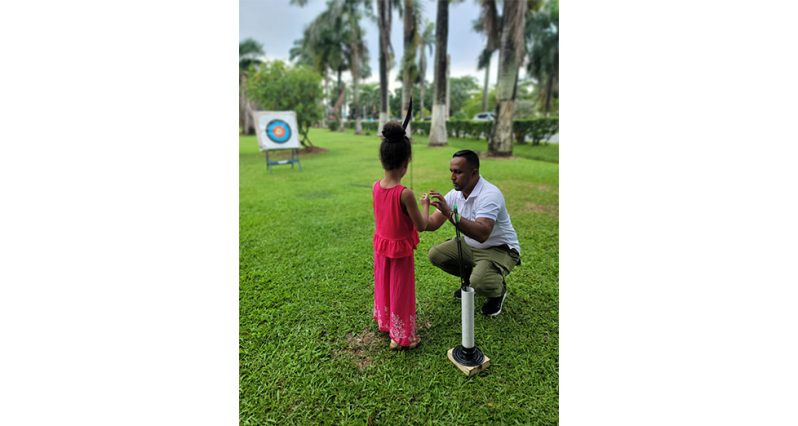By Chevon Lim
WITHIN the walls of the city sanctuary, thick with the sound of screaming macaws and the soft hum of city life awakening, a group of children gathered at the entrance of the Botanical Gardens on a nondescript Thursday morning.
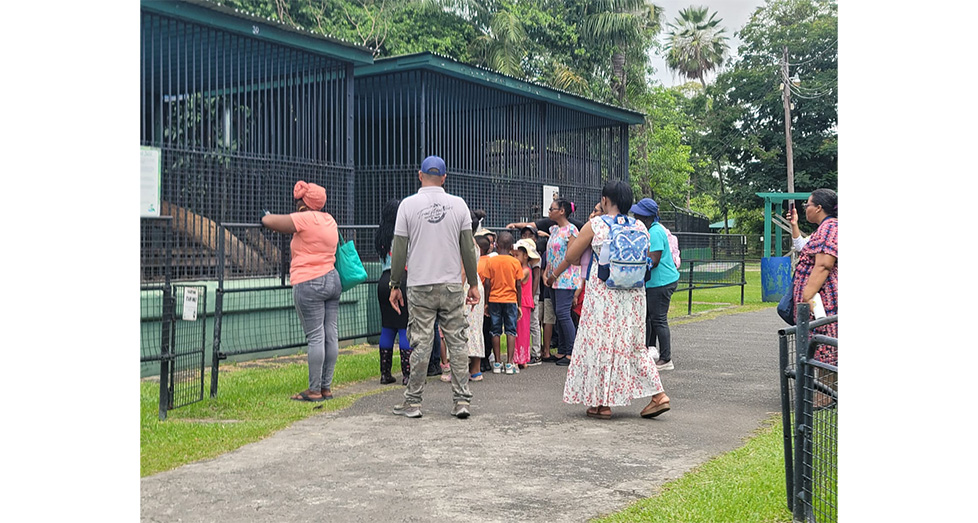
Backpacks bouncing and brimming with snacks, sneakers neatly laced and sunhats secured, they weren’t just here for a stroll. They were about to embark on the Botani’Kids Tour—an experience crafted by Trailmaster Adventure Tours in partnership with the Protected Areas Commission (PAC), the Guyana Wildlife Conservation and Management Commission, and other partners—a tour that promised laughter, discovery, and a quiet but powerful lesson for young minds in environmental stewardship.
The adventure began with a ten-minute briefing session led by tour guide Christopher Chin of Trailmaster Adventure Tours. Parents leaned in while children fidgeted with excitement, eyes wide as the guide explained what lay ahead. The first leg: the Guyana Zoological Park, a sanctuary for animals and their stories. Each animal within the enclosures was a survivor—rescued, rehabilitated, and given a new lease on life.
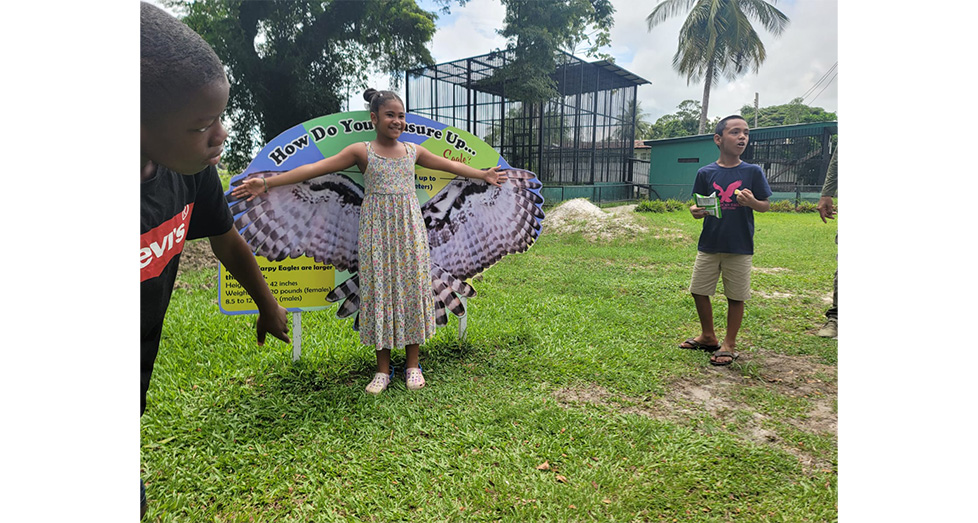
As their little feet pattered across the threshold, the city zoo opened up like a world of wonders waiting to be explored. Flanking left and right were birds of every description and colour, their calls beckoning to the frenzied children, who pressed closer to the enclosures as the birds preened and proudly paraded their vibrant plumage. What a show they put on—and what a task it was keeping the tour group in tow! Left and right they flitted, torn between the exciting stories and animal histories told by the expert guide from the Protected Areas Commission. Amidst the excitement, they became fascinated as the guide described the journey of a harpy eagle that had been rehabilitated after an injury.
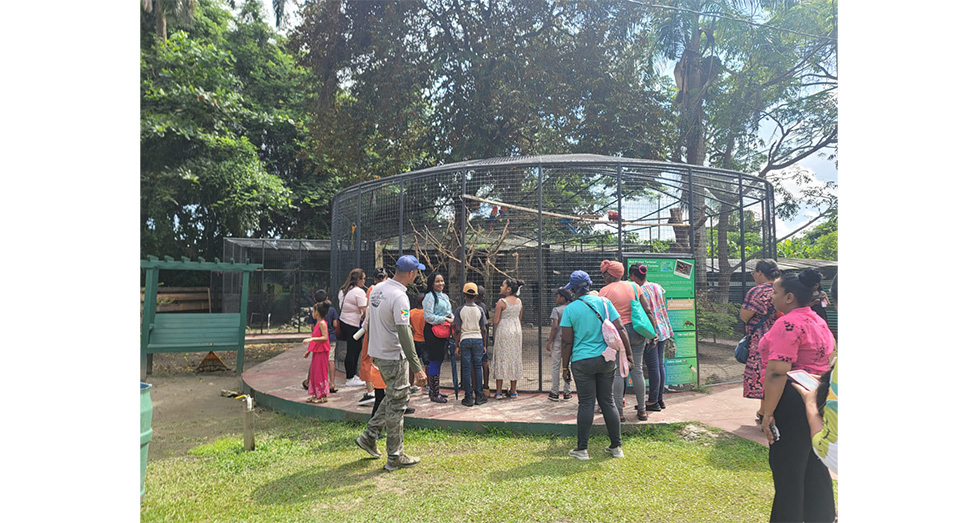
The adults were not left behind, as they too were drawn into these narratives, often surprised by how little they knew of the creatures that found a home in the zoo. Every pawprint, every feather, every gaze was a lesson in resilience. For many of the animals, the zoo is more than just a home—it is a place of healing. As the guide explained, wide-eyed children and their guardians listened closely, learning that the zoo is where the sick, the injured, the orphaned, and even animals rescued from captivity come to find care. Some of the little ones gasped with delight when they heard that many of these creatures are eventually released—strong and healthy—back into the wild.
“So they get to go home again?” one child whispered, her eyes shining.
The guide nodded, smiling, and went on to say that in this way, the zoo has been quietly acting as a rehabilitation centre for years. Still, some stay—animals too badly hurt, too young to survive alone, or too long in human hands. To the children, they weren’t just permanent residents, but new friends—part of the zoo’s family, ready to be loved and admired for the rest of their days.
As they made their way deeper into the park, squeals of delight filled the air as the sight of the monkeys and their antics sent the little ones into fits of giggles. Then came the gasps—Jada and Jazz, two magnificent pumas, lounged lazily in their enclosure, staring curiously back. The children pressed wide-eyed against the safety railing, marvelling at the sweep of their paws, the gleam of their teeth, and the low rumble of purrs that made the ground seem to tremble. The visit happily coincided with feeding time, so the group was treated to the breakfast show!

Yet it was Johnny the otter who stole the spotlight. With a playful leap into his pool, he splashed and spun, showing off tricks that drew claps and cheers. He paused only to pop up for a quick peek around, basking in the laughter and attention of his new friends. A quick stop at the petting zoo evoked another round of “oohs” and “ahhs” before a shimmering pond beyond invited quiet awe—turtles inched gracefully along the banks while caiman waded silently below the water’s surface. There was so much to see, both on the way in and on the walk back, and despite the detailed tour and bright sunshine, the energetic bunch never lost their eagerness to explore.
After the walk, the group made their way to one of the garden’s many seating areas and huddled together for refreshments. Sticky fingers wiped clean, they leaned in as a representative from the Guyana Wildlife Conservation and Management Commission shared why conservation matters—not as a lecture, but as a conversation. This was another aspect of the tour designed to reinforce the importance of conservation and to reference the animals the children had met during their zoo walk.
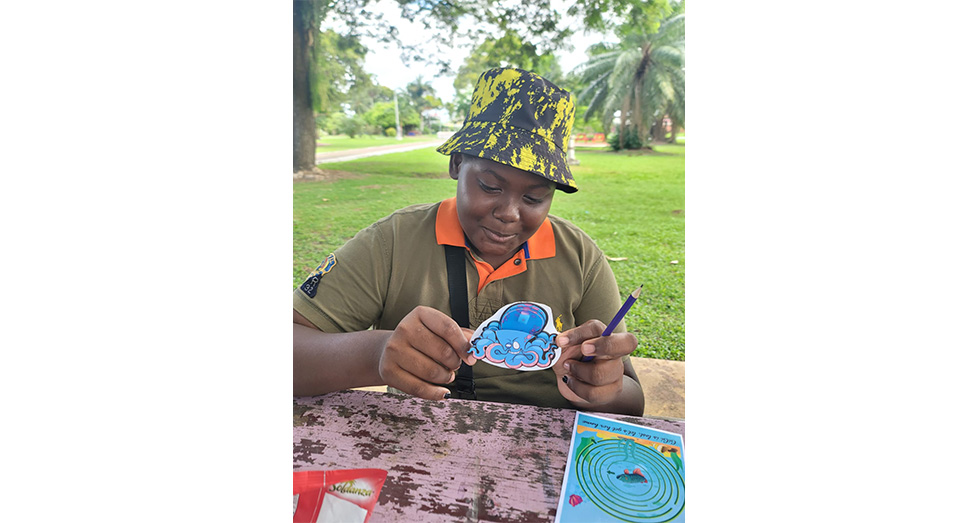
Then came a highlight: the storytelling session. The children fell into an enchanted silence as the book “Gigi the Giant Arapaima” was brought to life. Through the tale of a fish as long as a canoe, young listeners absorbed something profound—that rivers, forests, and animals are not just backdrops to our lives, but living treasures to be protected. Each child left clutching their own copy of the book, a keepsake and reminder that they, too, are part of the story. The momentum continued with tree-hugging and grounding, and to most of the older kids, it was just an opportunity to climb the limbs of the nearby towering trees.
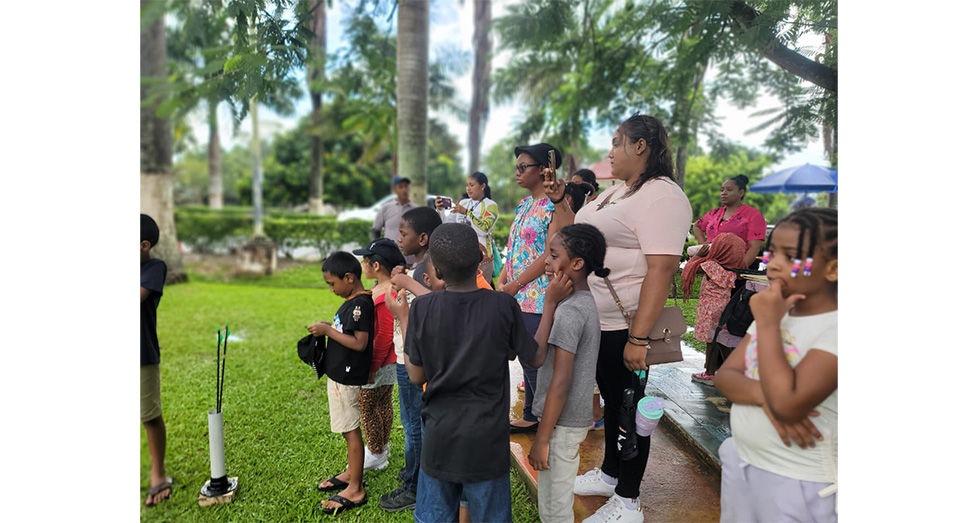
The next leg of the tour brought the group to archery, where a mix of excitement and nervous giggles rippled through the air. Tiny hands clutched at bows almost as tall as their owners, and one by one, the little tikes bravely stepped up to try their luck at hitting the bullseye. Some arrows wobbled, some barely made it past the line, but each shot drew cheers from their friends. Off to the side, a few cautious ones lingered in the queue, torn between fear and curiosity, until the adults stepped forward with encouraging smiles. With steady hands, they showed how it was done—drawing the string back, taking aim, and letting the arrow fly true. The children watched in wide-eyed awe, their hesitation melting into laughter and renewed courage as they scrambled to join the fun, eager to prove they too were brave enough to give it a go. In the end, both parents and little ones were in line for yet another turn.
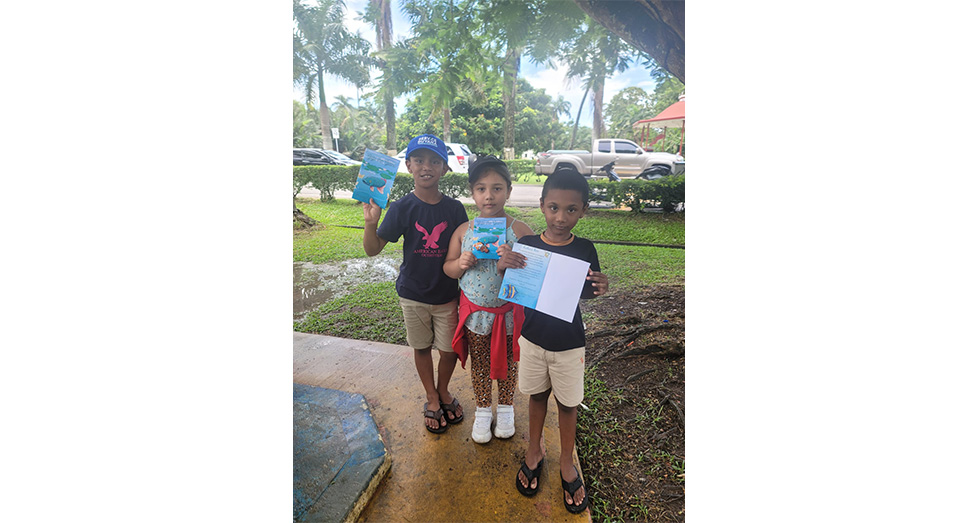
The fun continued and the laughter echoed across the pathways, punctuated by the occasional triumphant shout—“I found it!”—during a scavenger hunt for hidden flora and fauna. For the adults, there were parallel sessions—gentle yet eye-opening conversations about sustainable practices and conservation habits they could implement at home. Parents often found themselves learning as much as their children, reminded that environmental responsibility is as much about daily choices as it is about policy.
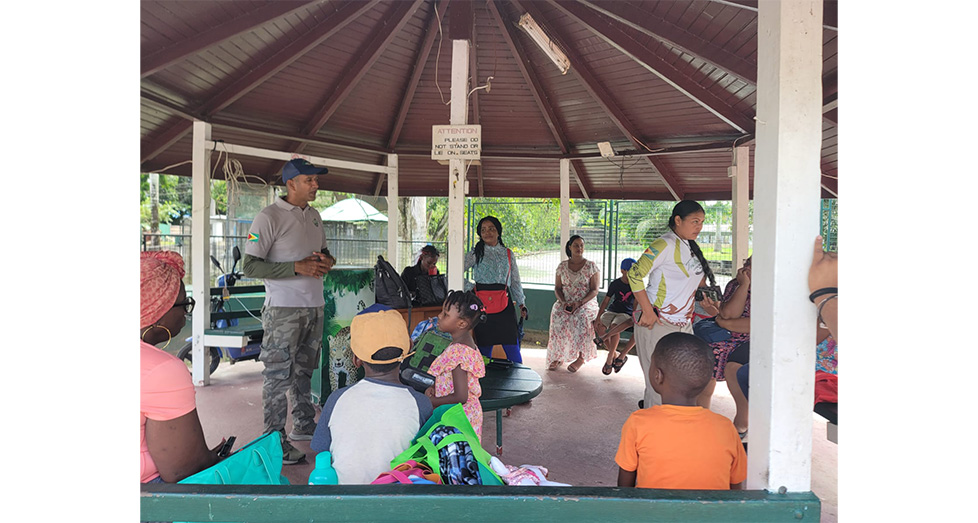
As the afternoon sun shifted and the final echoes of laughter faded among the trees, the Botani’Kids Tour drew to a close. What began as a simple Thursday morning tour had blossomed into a day alive with adventure—of feathered shows and furry friends, daring arrows and hidden treasures, splashes of otters and stories that leapt from the pages of books. But beyond the thrills and giggles lay something deeper: a gentle awakening.
The children left not only with memories of pattering feet and wide-eyed wonder, but also with an understanding that the creatures they met and the forests and rivers they learned about are fragile treasures entrusted to their care. And so, backpacks a little lighter, smiles a little brighter, and lessons tucked away like keepsakes, the group stepped back through the gates knowing that while the day’s tour had ended, their journey as guardians of the environment had only just begun.
The Botani’Kids Tour is an investment in the future. By blending conservation with play, it plants seeds of environmental awareness in the next generation. The organisers are now in discussions to make the Botani’Kids Tour a permanent fixture. Initially rolled out during the August vacation, the programme has proven that learning outdoors is not just enriching—it’s transformative.
In the Botanical Gardens, under the bluest of skies, the Botani’Kids Tour proves that education can be joy—and that joy can lead to change. The real treasure isn’t the puzzle solved or the scavenger hunt prize—it’s the moment a child looks up at a towering tree or into the eyes of a rescued animal and thinks, I want to protect this.



.jpg)




